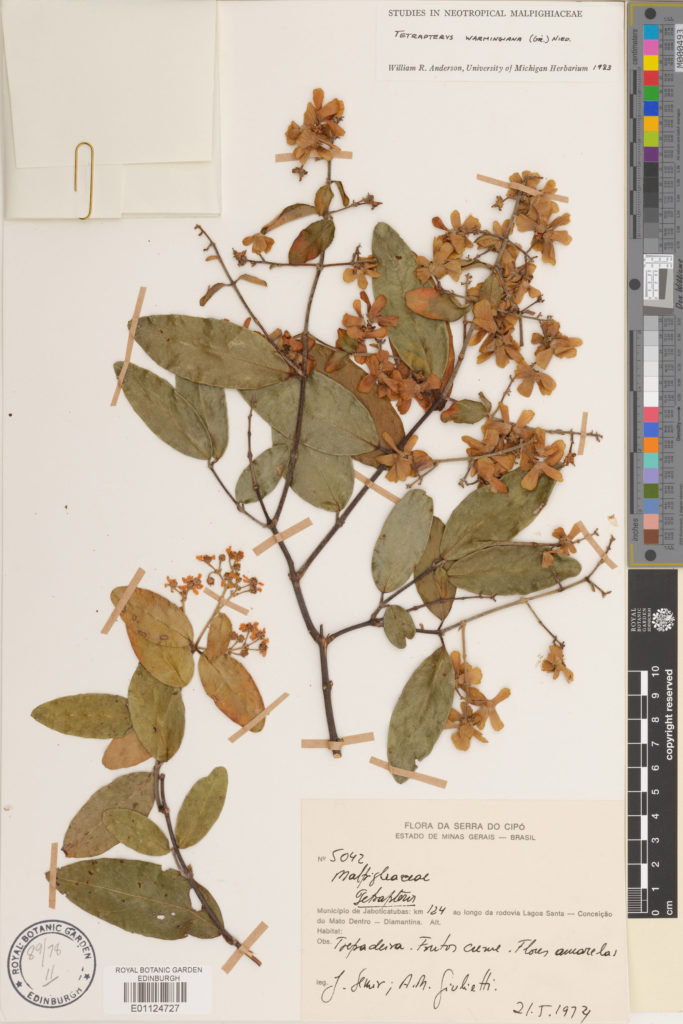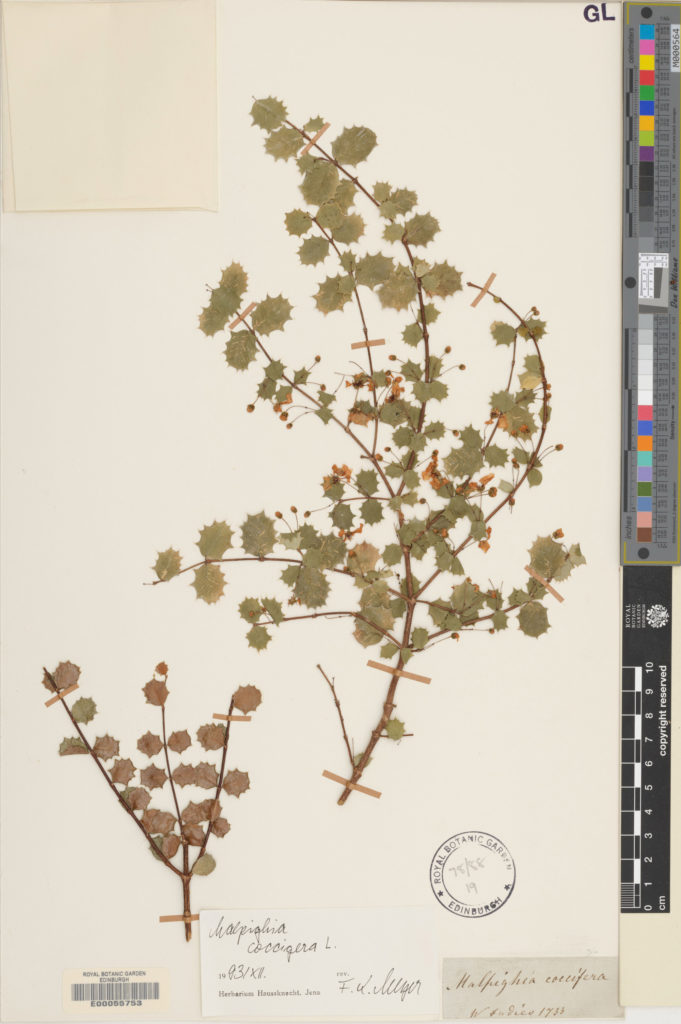The following blog was written by Linde Hess a digitiser in the Herbarium.
Since 2021 we have increased our digitisation capacity with the goal of getting to 1 million specimens imaged by Autumn 2024. Each digitiser is assigned a family of plants to work through. This series of blogs will spotlight the families that have been completed by a member of the team.
About the family
The Malpighiaceae family can be found across the globe, but most of its species occur in the Americas, growing in tropical and subtropical forests and savannas.
In this family a lot of members have extrafloral nectaries, which means a sugar rich substance is produced in glands in the leaf blades. This nectar is especially attractive to ants and a variety of other nectar-foraging insects such as wasps, bees, flies and beetles, and more rarely spiders and mites. Creatures, in particular ants, who drink the nectar tend to defend the plant against herbivores. One can view the extrafloral nectar as currency the plants use to pay ant bodyguards to protect them against herbivore damage. Extrafloral nectaries are not unique to the Malpighiaceae family; several other mainly Neotropical plant families also have them.

Our collections at Edinburgh
Prior to digitisation we had 1195 specimens available through our online catalog. Following digitisation we now have 2184 Malpighiaceae specimens in our collection, with the project making a further 989 specimens available.
We currently hold 99 Type specimens for species within the Malpighiaceae.
Specimens of the Malpighiaceae can be viewed through our online catalog here.
Top 5 Regions
Malpighiaceae mostly grow in the tropical and subtropical areas of North and South America, and this is reflected in the top regions for this family.
| No. of Specimens | Herbarium Filing Region |
| 923 | E. Tropical South America |
| 230 | W. Tropical South America |
| 228 | Central America |
| 153 | Caribbean |
| 133 | India, Bangladesh & Pakistan |
Top 5 Genera
| No. of Specimens | Genus |
| 470 | Byrsonima |
| 210 | Hiptage |
| 203 | Heteropterys |
| 146 | Banisteriopsis |
| 135 | Aspidopterys |
Underrepresented genera
There are several genera that may be underrepresented in our collections, with only one specimen held for the following genera:
- Glandonia
- Diacidia
- Verrucularia
- Bronwenia
- Henleophytum
- Rhynchophora
- Microsteira
- Alicia
- Heladena
- Blepharandra
These genera may be of interest for future collection expeditions. The reason we have low representation of these genera is that most only consist of a few species and/or they are endemic to Madagascar (Microsteira, Rhynchophora are endemic to Madagascar). We are probably also missing some genera of Malpighiaceae in our collection, but this is harder to check for.
Interesting specimens
The earliest Malpighiaceae specimen in our collection is Malpighia coccigera L. collected in 1733 in the Caribbean. Malpighia coccigera L. is commonly known under the names miniature holly, Singapore holly or dwarf holly due to the shape of its leaves. It is grown as an ornamental plant and often grown in bonsai form.

